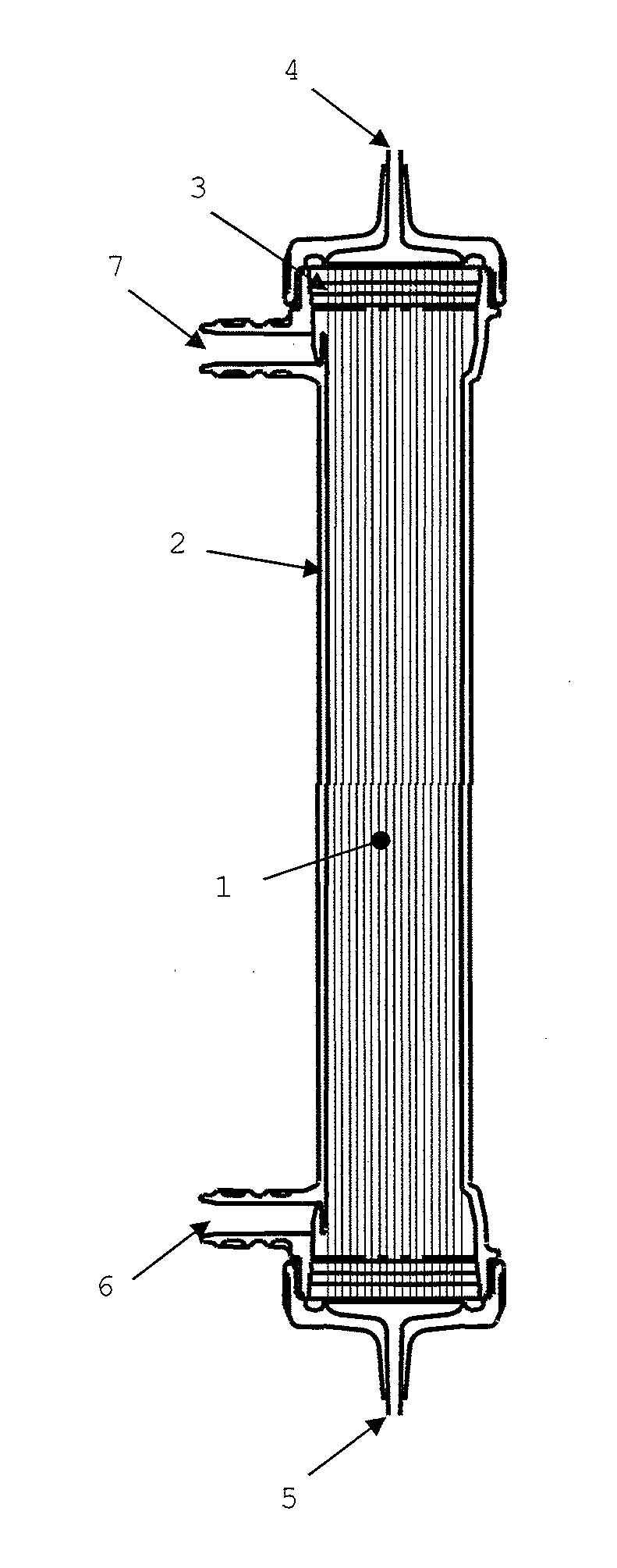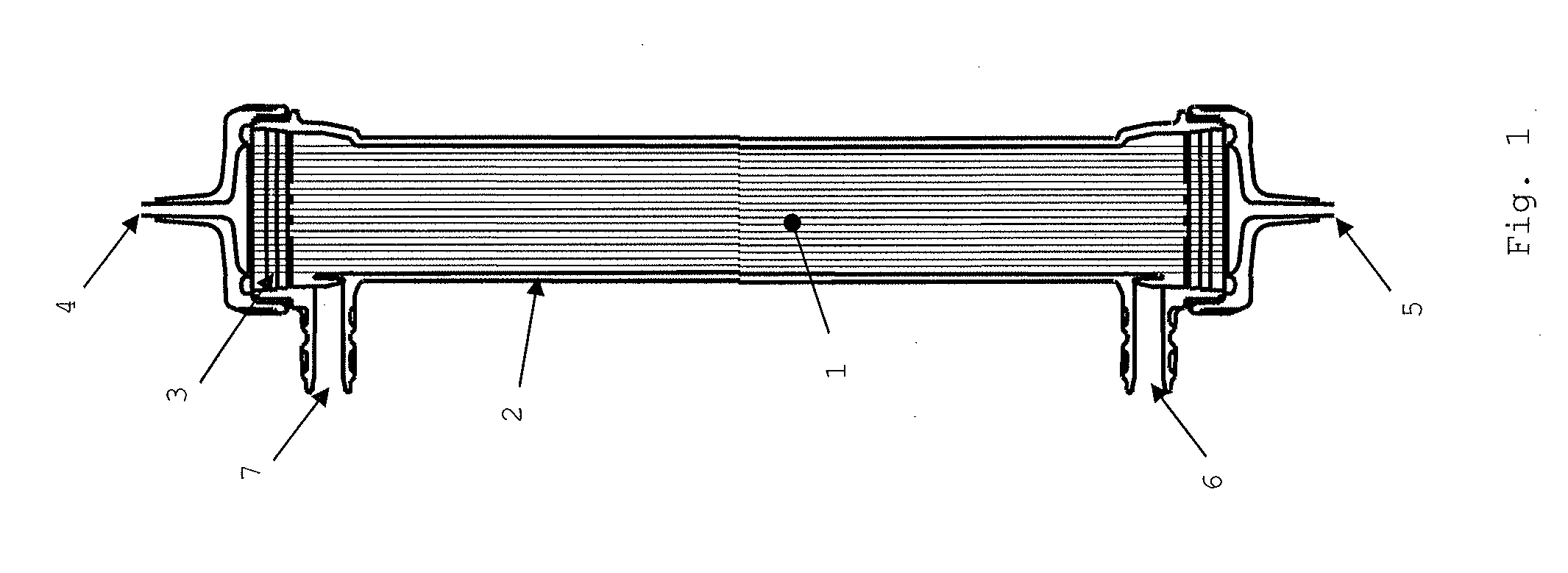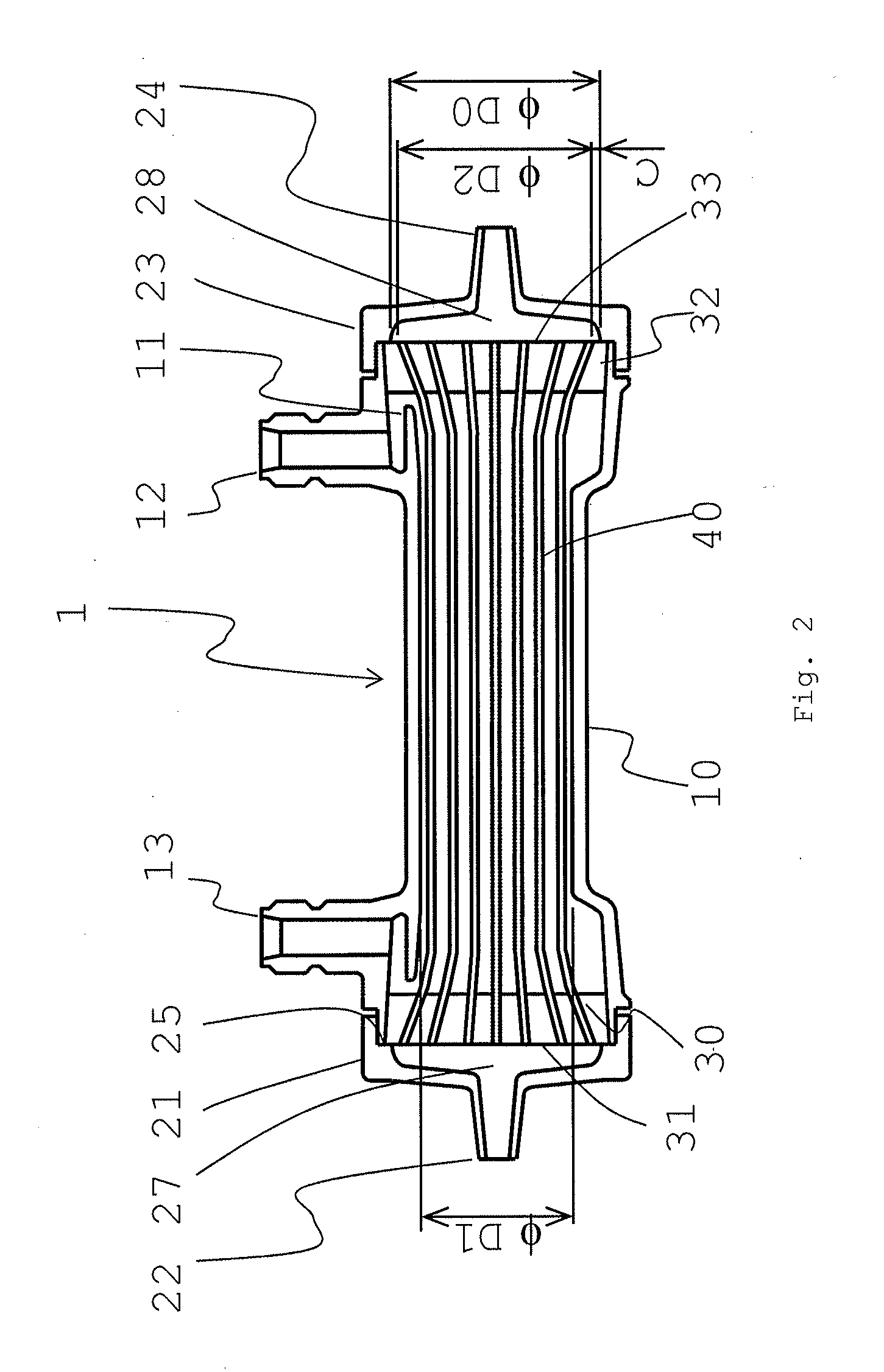Medical material and hollow fiber membrane module
a technology of hollow fiber membrane and medical materials, applied in the field of medical materials, can solve the problems of deterioration in performance, inability to achieve satisfactory deposition prevention effect, and increase in burden on living bodies, and achieve high anti-thrombotic properties, high safety, and high stability.
- Summary
- Abstract
- Description
- Claims
- Application Information
AI Technical Summary
Benefits of technology
Problems solved by technology
Method used
Image
Examples
example 1
[0151]Nine thousand and seven hundred hollow fiber membranes 1-1 were inserted into a case having an inner diameter of 36 mm, and the edge face part of the case was blown to disperse the hollow fiber membranes therein. Both ends of the hollow fiber membranes were respectively fixed to the edge parts of the case with a potting material, and a portion of the end of the potting material was cut to open the hollow fiber membranes at the both ends. The effective length of each of the hollow fiber membranes was 26.4 cm. A header part was attached to the resulting product, thereby producing a hollow fiber membrane module (a). The hollow fiber membrane filling rate in a zone lying between the outermost periphery and a position located 1 mm apart from the outermost periphery toward the inner periphery in the edge face part was 47%, the hollow fiber membrane filling rate in a center part was 62%, wherein the difference between the filling rates was 15%. The Ra of the edge face part was 0.2 μm...
example 2
[0154]A hollow fiber membrane module (a) that was produced in the same manner as in Example 1 was used, and a vinylpyrrolidone-vinyl acetate copolymerization polymer (60 / 40 (by weight)) was used as the hydrophilic copolymerization polymer. The relaxation time of the polymer was 1.6×10−8 seconds at −40° C. An aqueous solution containing 0.01% by weight of the polymer was prepared, and the hollow fiber membranes were moistened in the same manner as in Example 1, were then purged with nitrogen, and were then irradiated with 25 kGy of γ-ray within 1 week. The water content in the hollow fiber membranes was 2.7 times the dried weight of the hollow fiber membranes. The module was subjected to various tests.
example 3
[0155]The hollow fiber membrane module (a) was used, and a vinylpyrrolidone-vinyl acetate copolymerization polymer (50 / 50 (by weight)) was used as the hydrophilic copolymerization polymer. The relaxation time of the polymer was 1.4×10−8 seconds at −40° C. A mixed aqueous solution containing 0.01% by weight of the polymer and 0.1% by weight of ethanol was prepared, and the hollow fiber membranes were moistened in the same manner as in Example 1, were then purged with nitrogen, and were then irradiated with 25 kGy of γ-ray within 1 week. The water content in the hollow fiber membranes was 2.8 times the dried weight of the hollow fiber membranes. The module was subjected to various tests.
PUM
| Property | Measurement | Unit |
|---|---|---|
| particle diameter | aaaaa | aaaaa |
| thickness | aaaaa | aaaaa |
| temperature | aaaaa | aaaaa |
Abstract
Description
Claims
Application Information
 Login to View More
Login to View More - R&D
- Intellectual Property
- Life Sciences
- Materials
- Tech Scout
- Unparalleled Data Quality
- Higher Quality Content
- 60% Fewer Hallucinations
Browse by: Latest US Patents, China's latest patents, Technical Efficacy Thesaurus, Application Domain, Technology Topic, Popular Technical Reports.
© 2025 PatSnap. All rights reserved.Legal|Privacy policy|Modern Slavery Act Transparency Statement|Sitemap|About US| Contact US: help@patsnap.com



